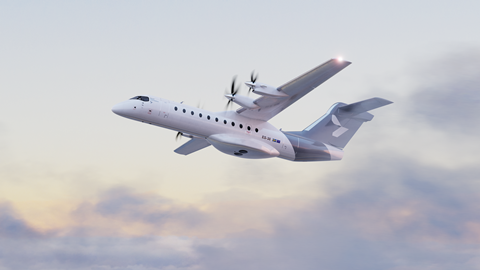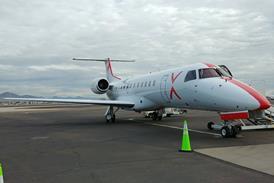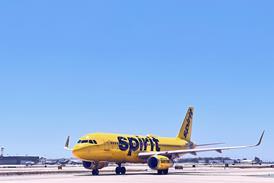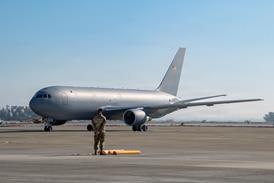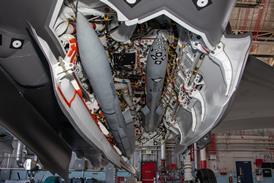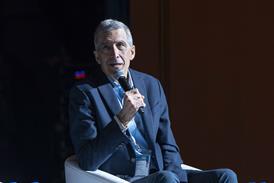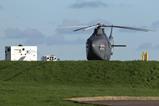Anders Forslund, chief executive of Heart Aerospace, has defended the hybrid-electric aircraft developer’s decision to close its Swedish operation and relocate to the USA, arguing it will benefit the business in the long run.
On 30 April, Heart announced it would be shutting down its Swedish home, based at Save airport near Gothenburg, and transferring all activities to El Segundo, a suburb of Los Angeles in California where it recently inaugurated a research and development centre.

Building on that move, and hinting that its centre of gravity was shifting across the Atlantic, Heart in November last year revealed that flight tests of its HX-1 all-electric demonstrator would take place in Plattsburgh in upstate New York.
Those moves had left the firm “at a crossroads”, says Forslund – who founded Heart in 2018 – noting that “we needed to make up our minds” on an ultimate location for the business.
But the developer will face significant disruption in the short term as it makes the move to Los Angeles, notably reconstituting its C-Suite and rebuilding its workforce, while also attempting to maintain momentum towards a first flight the HX-1 in the second half of 2025.
“We have the X1 starting to flight test later this year and then after that we have the [HX-2] pre-production prototype,” he says.
“At this point we needed to see where it makes sense to manufacture this aircraft.”
Heart built the HX-1 at its Save airport site, before painstakingly dismantling the prototype and shipping it across the Atlantic for reassembly prior to the maiden sortie.
Replicating that model for the HX-2 “did not make sense”, says Forslund, who also stresses the need for proximity between the flight-test and engineering teams to allow rapid design iteration. “It is the key to success,” he adds.
Heart has yet to set out a timeline for the full transfer of operations to the USA and the closure of the Gothenburg site but says it will “be pretty quick”.
Exactly how fast the Swedish operation and its 75-strong workforce can be replicated in LA is another question, however.
At present, the El Segundo site employs just 17 people, albeit recruitment is ongoing.
“There is no fixed number of positions that we are targeting,” says Forslund. “We plan to scale throughout 2025, with a focus on growing the organisation in a financially balanced and sustainable way.”
In addition to replacing those working at the coal face, Heart will also need to reshape its leadership. “There are going to be some big changes in the executive team,” says Forslund, with “some moving, some not”.
To date, the only confirmed departure is chief commercial officer Simon Newitt, although his resignation predates the US move, FlightGlobal understands.
Additionally, Forslund will be combining his duties as CEO with the role of board chair, as the incumbent, John Slattery, is “taking a step back” to focus on his other interests. However, Slattery will remain a shareholder in Heart.
“With all the other changes we are making we are not looking for a new chairman as well,” Forslund says.

Although conceding that “any major transition will bring some disruption”, by relocating to the USA and “investing in production validation there – we’re able to accelerate development, enhance collaboration, and deepen vertical integration across key systems including batteries, actuation, software, and propulsion”, he adds.
In the meantime, Heart needs to keep its HX-1 technology demonstrator – and then the HX-2 – on track towards a revised first-flight date.
Originally scheduled for the second quarter, the maiden sortie has now slipped to the back end of the year due to issues found with the composite material used in the wing.
While Heart says tests had shown the wing was capable of withstanding flight-limit loads “some of the material properties of the composites differed somewhat from what we’d predicted and decided to rebuild it”.
Heart expects to receive the new structure – somewhat counterintuitively still equipped with the strut-braces dropped from its eventual ES-30 product – in September, enabling a first flight in the final quarter.
Forslund says it decided to retain the struts as its aerodynamic modelling and flight-control software for the HX-1 has been built around their presence.
“If we start changing some of aerodynamic behaviours of the aircraft then we are moving some of the other workstreams as well,” he says, resulting in more work than is necessary.
But the design of the wing has changed slightly – it is now built in two rather than four parts. “We are just simplifying a lot,” he says.
It is one of several updates to the HX-1 since its September roll-out, reflecting its role as a “flying test bench”. Other changes include upgrades to the propulsion system, flight controls and fuselage, which has seen reinforcement in some parts and “lightening procedures” in others.
The delay of up to six months to the HX-1’s first flight will have a “little bit” of an effect on the HX-2’s schedule, but Forslund remains confident of a maiden sortie in 2026, noting the parallel development of the two aircraft.
It will also benefit from a “pilot” factory to be set up in El Segundo, proving out the manufacturing process for the type. Although the initial ES-30 test assets will also be built there, Heart has yet to decide on the location for its first high-rate final assembly line, save that it will be in the USA.
Heart has previously benefitted from funding from Sweden’s Vinnova innovation agency, although it last year also scored a $4.1 million grant from the US Federal Aviation Administration to develop a control system for the ES-30’s hybrid propulsion system.
Could Stockholm have done more to keep Heart? Forslund thinks not: “Heart Aerospace was born from Swedish engineering and entrepreneurship, and we are grateful for all the support we’ve received in Sweden.
“At the same time, our primary market today is North America, where both our customers and investors are based,” he says. Major orders for the ES-30 have been placed by Air Canada, Mesa Airlines and United Airlines.
“The relocation to the USA is a strategic decision that allows us to focus our resources, accelerate development, and deepen vertical integration.”
Certification and service entry for the ES-30 are targeted for 2029.
